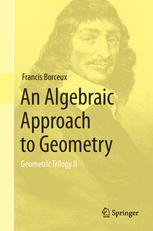

Most ebook files are in PDF format, so you can easily read them using various software such as Foxit Reader or directly on the Google Chrome browser.
Some ebook files are released by publishers in other formats such as .awz, .mobi, .epub, .fb2, etc. You may need to install specific software to read these formats on mobile/PC, such as Calibre.
Please read the tutorial at this link: https://ebookbell.com/faq
We offer FREE conversion to the popular formats you request; however, this may take some time. Therefore, right after payment, please email us, and we will try to provide the service as quickly as possible.
For some exceptional file formats or broken links (if any), please refrain from opening any disputes. Instead, email us first, and we will try to assist within a maximum of 6 hours.
EbookBell Team

0.0
0 reviewsMathematics Subject Classification (2010): • 51N10 Affine analytic geometry • 51N15 Projective analytic geometry • 51N20 Euclidean analytic geometry • 51N35 Questions of classical algebraic geometry
This is a unified treatment of the various algebraic approaches to geometric spaces. The study of algebraic curves in the complex projective plane is the natural link between linear geometry at an undergraduate level and algebraic geometry at a graduate level, and it is also an important topic in geometric applications, such as cryptography.
380 years ago, the work of Fermat and Descartes led us to study geometric problems using coordinates and equations. Today, this is the most popular way of handling geometrical problems. Linear algebra provides an efficient tool for studying all the first degree (lines, planes) and second degree (ellipses, hyperboloids) geometric figures, in the affine, the Euclidean, the Hermitian and the projective contexts. But recent applications of mathematics, like cryptography, need these notions not only in real or complex cases, but also in more general settings, like in spaces constructed on finite fields. And of course, why not also turn our attention to geometric figures of higher degrees? Besides all the linear aspects of geometry in their most general setting, this book also describes useful algebraic tools for studying curves of arbitrary degree and investigates results as advanced as the Bezout theorem, the Cramer paradox, topological group of a cubic, rational curves etc.
Hence the book is of interest for all those who have to teach or study linear geometry: affine, Euclidean, Hermitian, projective; it is also of great interest to those who do not want to restrict themselves to the undergraduate level of geometric figures of degree one or two.